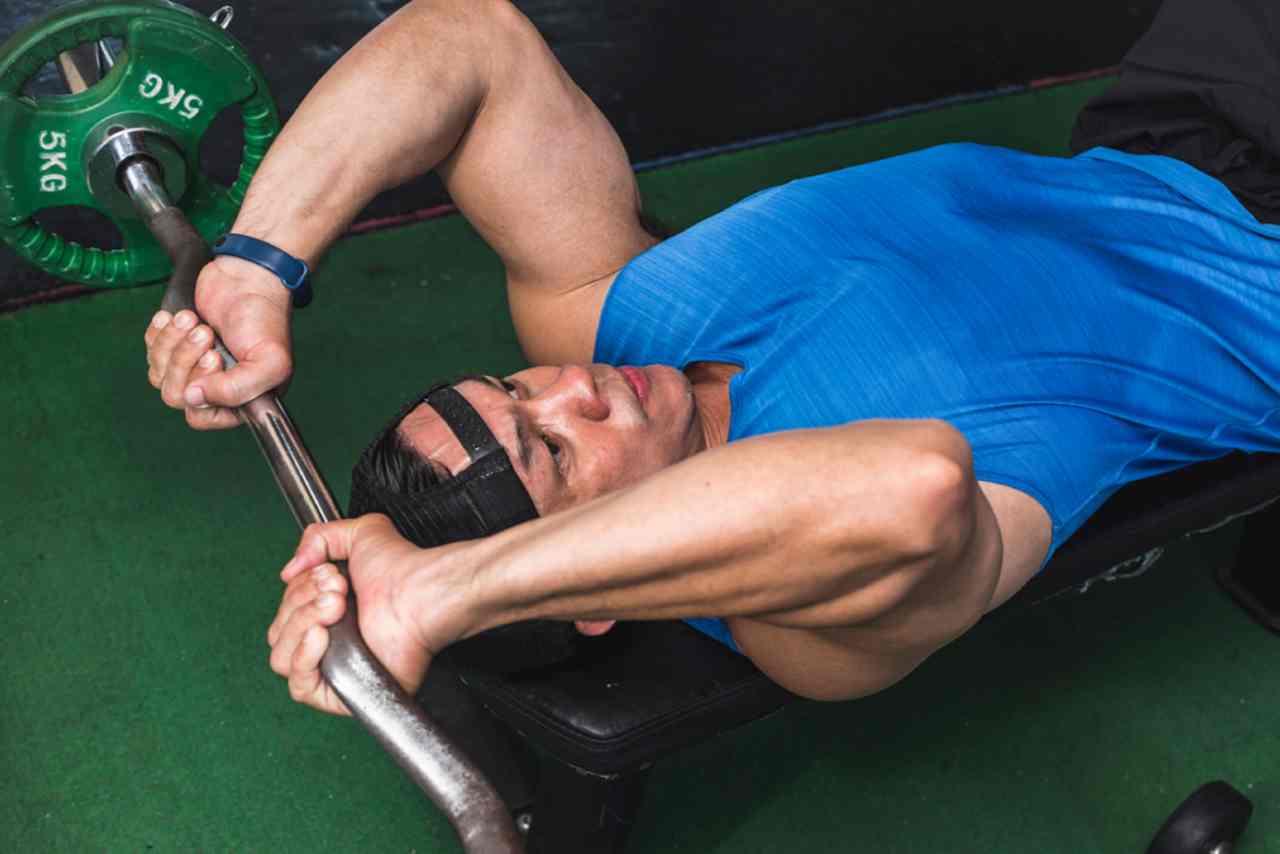At WH, we believe sweat changes everything. Well, for many Black women, that includes hair, which can take on a different form – straight, curly, coily – with just a drop of water or heat. So when choosing between a workout or a wet set, hair wins, almost always. Let’s level the playing field. Here’s how to balance your haircare and workouts.
Your butt or your blow-dry?
Don’t get me wrong, I love my natural curls. But they can be a bit of a hindrance when it comes to working out. I’ve seen my wash-and-gos transform into wash-and-nos after a good sweat sesh, usually leaving my scalp dry and coils less defined. Sometimes, admittedly, I skip exercising altogether to preserve a fresh twist-out or a recently blow-dried ’do. Before you judge, this dilemma extends far beyond vanity for many Black women. It’s also about ingrained societal pressure to groom our hair to a point of “acceptability” and explain our hairstyles and practices at work, among friends, and, yes, in the gym. Both were reported by Black women as barriers to physical activity (along with time and money spent on hair) in research in Frontiers in Public Health. Lately, I’ve taken comfort in at-home workouts that allow me to skip scanning the gym’s complimentary hair tools, which rarely cater to Black women.
The pitfalls of good hair and no workouts
But some days, the time-consuming detangling session still outweighs the at-home workout. Yet I’m committed to sweating. Why? Because it’s about more than just hair. In South Africa, 68% of women are overweight or obese, according to research in The Lancet. And more South Africans are dying of lifestyle diseases than of HIV/Aids and TB combined – cardiovascular disease topping the list. Regular activity can prevent or at least help manage these conditions. It’s time to take matters of hair and health into our hands.
How to balance the scales
Understand your structure
The key to developing a more manageable ecosystem for your hair and fitness life begins with a better understanding of the follicle. A curly strand “has more of an elliptical shape, so the hair comes out at an angle,” says Bridgette Hill, a trichologist, colourist and hair science expert (see @thescalptherapist on Insta). The growth pattern is curvy and winding, which can lead to more breakage. Plus, African hair types and textures have a greater number of disulphide – or sulphur – bonds, says Hill. These natural factors make the hair more susceptible to wetness, causing shrinkage and swelling and giving your edges that frizzy appearance after a workout. And because the hair cuticle has so many openings due to its curvature, any disruptors (e.g., oxygen, heat, sweat) impact the hair at a more intense level. Whew! That’s a lot, but it’s not all bad: Certain elements change the state of your hair, yes, but sometimes for the better. Sweat is 99 per cent water – in the hair, it’s a combo of H2O, sodium and oils excreted by the scalp. In fact, Hill calls sweat the body’s own leave-in conditioner. (You just have to work it.)
Create a regimen
You should prioritise retaining moisture, similar to how you put strength training at the top of your to-do list. This starts with a great washing schedule, says Sophia Emmanuel, an IAT Certified Trichologist. Let’s be honest: How many times have you been told that you can go forever without washing your hair? Here’s the truth: While Black women can get away with shampooing less often, there’s no reason you shouldn’t be cleansing consistently. Aim for once a week and no more. If you wait too long to clean hair after working out and slick it back into a ponytail or bun, the combo of sweat, bacteria and product build-up in your scalp will create dryness, says Emmanuel. So in between washes, she suggests applying a gentle astringent, like witch hazel, to your scalp with a spray bottle or cotton ball to lift up any dirt.
Find your product BFFs
Once you’ve set a routine, focus on aftercare. This depends heavily on your curl type and texture. Hill breaks this down into four categories. To find your match, read on!
Fine hair, loose wave to curly hair texture
This hair fibre will typically have more elasticity since the holes in the strands are closer together, meaning it can become weighed down by cream-based moisturisers (even though common sense would say they’d be super nourishing!). The hair also absorbs a lot of frizz-making water, so Hill suggests “pre-shampoo” oil treatments. Oil applied to dry and dirty hair will fill those exposed areas of the cuticle and any excess will be removed during the shampoo. Follow up with a water-based styling product for a soft bounce.
Medium hair, loose wave to curly texture
Your hair requires creamier products with heavier moisturisers to create more definition. Opt for conditioning goods that contain fatty acids (think: avocado oil, coconut oil and shea butter). Mmm, rich.
Coarse, thick hair, loose wave to highly curly texture
A daily combo of water plus a heavier cream-based or oil-based moisturiser will give your hair the elasticity it needs. Layer more product for a defined look and less if you want to stay closer to your natural hair texture – with a little frizz and ’fro to it.
Very curly texture to tightly coiled
It can be challenging to retain moisture but there’s an easy fix: protein. Hill suggests infusing hair when it’s dry and dirty with protein-based conditioners or masks (to serve as binding agents), then rinsing them out.
Choose your style
The final step in this journey: styling. The key is to avoid central centrifugal cicatricial alopecia (CCCA), a common cause of alopecia – hair loss – among Black women due to styling, genetics and scarring around the hair follicles. Remember, your scalp produces natural bacteria when you sweat, and certain styles (hello, high ponytails or buns) can lock it in, leading to follicle breakdown and hair loss. Experts agree you should pick a style that allows you
access to the scalp. Braids are good but try to steer clear of adding extra hair or extensions as these cut down on breathability and increase tension. Your safest bets are twist-outs, flexi-rod sets, twisted up-dos, wash-and-gos and short, natural cuts.
Grab and go!
These products take care of beaten braids and needy strands.
Aunt Jackie’s Power Wash Clarifying Shampoo
Pre-poo treatments – moisturising and clarifying formulas that you smooth through hair before you shampoo – are freakin’ genius. This gives coily hair a deep clean, removing impurities and build-up, while infusing it with moisture,
courtesy of aloe vera and coconut milk.
R138 at Clicks
Native Child Milk n Honey Moisture Créme
This natural and plant-based creme is a moisture-rich formula excellent for both hair and skin. Blended with oils like Shea and avocado,
it detangles and conditions
while also moisturising.
R80 at Clicks
BOITY Sovereign Repair Serum
A repair serum with a mix of the good stuff: black seed oil to help with brittle strands and protection against the damage from heat styling. Shea, jojoba and avocado oils to strengthen and condition hair – if you need intensive hydration, that is.
R150 at Takealot
Moroccanoil Intense Curl Cream
A rich leave-in conditioner that
hydrates, detangles and fights frizz – leaving natural curls and waves shapely and beautifully curly.
R580 at Paul Mitchell
Shea Moisture Raw Shea Butter Masque
Made with sea kelp and argan oil, this deep treatment masque provides intense moisture for
dry, damaged hair and instead strengthens, restores and stimulates growth. Who doesn’t want that?
R359 at Takealot
Umberto Giannini
Weather Proof Curls Finishing Cream
This curl-enhancing cream conditions, moisturises and smoothes curls, leaving hair frizz-free and defined no matter what the weather conditions.
R160 at Clicks
Women’s Health participates in various affiliate marketing programmes, which means we may get commissions on editorially chosen products purchased through our links to retailer sites.













